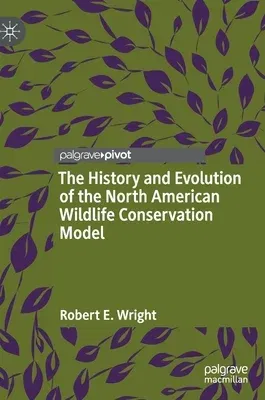Robert E Wright
(Author)The History and Evolution of the North American Wildlife Conservation Model (2022)Hardcover - 2022, 16 June 2022

Qty
1
Turbo
Ships in 2 - 3 days
Only 1 left
Free Delivery
Cash on Delivery
15 Days
Free Returns
Secure Checkout

Print Length
130 pages
Language
English
Publisher
Palgrave MacMillan
Date Published
16 Jun 2022
ISBN-10
3031061624
ISBN-13
9783031061622
Description
Product Details
Author:
Book Edition:
2022
Book Format:
Hardcover
Country of Origin:
NL
Date Published:
16 June 2022
Dimensions:
21.01 x
14.81 x
0.97 cm
Genre:
Modern
ISBN-10:
3031061624
ISBN-13:
9783031061622
Language:
English
Location:
Cham
Pages:
130
Publisher:
Weight:
326.59 gm